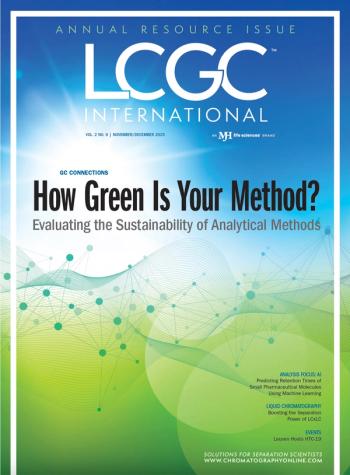
LCGC Europe eNews
- LCGC Europe eNews-06-08-2012
- Volume 0
- Issue 0
ChromaDex and the Scripps Research Institute collaborate
ChromaDex Corporation (CDXC) (Irvine, California, USA) has announced that it has collaborated with the Scripps Centre for Metabolomics (La Jolla, California, USA) to generate tandem mass spectrometry data for compounds from the ChromaDex natural products and phytochemical catalogue.
ChromaDex Corporation (CDXC) (Irvine, California, USA) has announced that it has collaborated with the Scripps Centre for Metabolomics (La Jolla, California, USA) to generate tandem mass spectrometry data for compounds from the ChromaDex natural products and phytochemical catalogue. There is currently limited information for natural products in the database. By expanding the population of data, it will increase the knowledge base for researchers to screen potential compounds for use in areas of clinical interest.
The Scripps METLIN Metabolite Database is a repository of metabolite information that includes tandem mass spectrometry data for over 55,000 compounds. It is a public, web-based database designed for the archiving, visualization and analysis of metabolite data.
Gary Siuzdak, PhD, senior director, Centre for Metabolomics and Mass Spectrometry Scripps Research Institute, commented, “We are very excited about expanding the METLIN metabolite database with the ChromaDex phytochemicals. METLIN is currently the largest repository of metabolite tandem mass spectrometry data. The importance in the ChromaDex/METLIN partnership is that it will facilitate metabolomics experiments around the world.”
Frank Jaksch, founder and CSO for ChromaDex, said, “Collaborating with Scripps Research Institute with our natural product libraries will further advance small molecule profiling to increase demand for natural product libraries through the ease of the internet to assist in finding candidate compounds for research and development.”
For more information please visit
Articles in this issue
over 13 years ago
Column Characterization Databasesover 13 years ago
FSA ends animal testing in shellfish programmeNewsletter
Join the global community of analytical scientists who trust LCGC for insights on the latest techniques, trends, and expert solutions in chromatography.



